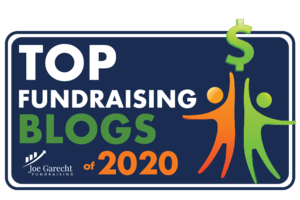Planned Giving is a vital source of contributions for the nonprofit sector. Organizations that do not have a gift-planning program envy those that do. Those that do have a planned-giving program want even better results.
It’s no wonder.
Bequest giving amounted to eight percent of all charitable donations in 2016 (Giving USA). That’s just counting people who included a charity in their Will. It does not include people who gave through Beneficiary Designation, Charitable Gift Annuity, Stock, Appreciated Personal Property, or other planned-giving vehicles.
While planned giving can certainly present challenges, there are many simple things you can do to create or enhance your organization’s gift-planning efforts:
1. Focus Your Efforts
You likely do not have the time or budget to reach-out personally to every one of your organization’s supporters to seek a planned gift. Instead, you need to focus on the highest priority prospects, those most likely to make a planned gift.
So, who are your best planned-giving prospects?
 The answer to that question will depend on what type of planned gift you are seeking. For example, if you want more people to include your charity in their Will, arguably the most common form of planned giving, you’ll want to consider two key factors:
The answer to that question will depend on what type of planned gift you are seeking. For example, if you want more people to include your charity in their Will, arguably the most common form of planned giving, you’ll want to consider two key factors:
First, people who are childless are far more likely to include a charity in their Will, according to philanthropy researcher Russell James, JD, PhD, CFP®. However, just because someone is more likely to make a Charitable Bequest commitment to a charity does not mean they will be willing to commit to your charity.
Second, loyal supporters of your organization are the people most likely to make a planned gift to your specific organization, according to UK-based philanthropy researcher Claire Routley, PhD. Your loyal supporters are people who donate frequently, regardless of gift amount. Loyal supporters are also people who volunteer. People who donate cash and volunteer are nearly twice as likely to make a gift through their Will compared to individuals who do only one or the other, James’ has discovered.
When seeking other types of planned gifts, you’ll want to take into account other factors. For example, if you want people to contribute from their IRA, you’ll want to appeal to people over the age of 70.5, the age of eligibility for such giving. If you want folks to donate appreciated Stock, you’ll broaden your audience because the majority of Americans own Stock.
2. Give Your Prospects What They Need
A number of researchers, including Adrian Sargeant, PhD and Elaine Jay, PhD, have identified some key things nonprofit supporters say they need. For example, they want to know that smaller gifts are useful and that you’re not just looking for rich people to give mega-donations.
Prospects also want to know how those your organization serves will benefit from planned-giving support. They want to hear, see, and read stories of people who have been helped as a result of planned gifts.
While prospects and donors want communications to be continuous and varied, they do not want redundant messages. If the information is fresh and meaningful, people will appreciate it. If it’s repetitive and/or superfluous (e.g., information about how to include the charity in their Will when they’ve already done so), they won’t appreciate it and might even become alienated.
Prospects and donors want to know exactly who to contact, and how, whenever they have a question. So, provide the name of a person (not just the department) and full contact information. Make it easy for people to contact the right person in the way they want to; that means provide a mailing address, email address, and phone number.
3. If You Want Planned Gifts, Ask for Them
Only 22 percent of those over age 30 say they have been approached for a planned gift, according to a Stelter survey. However, 88.7 percent of people think it is appropriate for a nonprofit to ask for a legacy gift, Sargeant and Jay’s research has found.
While most nonprofit organizations with a planned-giving program will ask select prospects to make a gift, the vast majority of prospects will still go un-asked. Instead, they’ll be exposed to a lot of passive marketing such as newsletters, un-dynamic web pages, emails, etc.
Ignoring a massive number of prospects, or relying on passive marketing, could be costing your charity millions of dollars in support. Instead, use engaging tactics to identify the strongest prospects. For example, you can use surveys to engage and help you rate prospects to determine appropriate cultivation and solicitation strategies. You can also use traditional fundraising methods to ask people to make a planned gift including direct mail and telephone appeals.
Prospects say it’s appropriate for you to ask them for planned gift. So, do it!
You can get five additional simple, powerful ideas for raising more money through planned giving by reading “5 Easy Tips for Better Planned Gift Marketing,” my guest post for Gail Perry’s Fired Up Fundraising blog.
For even more insights, helpful tips, and real-life examples, read Donor-Centered Planned Gift Marketing, my award-winning, bestselling book that appears on the official CFRE International Resource Reading List.
For three valuable and free resources from philanthropy researcher Dr. Russell James, click here.
What simple tips can you share for raising more money through planned giving? Let me know with a comment below.
That’s what Michael Rosen says… What do you say?








